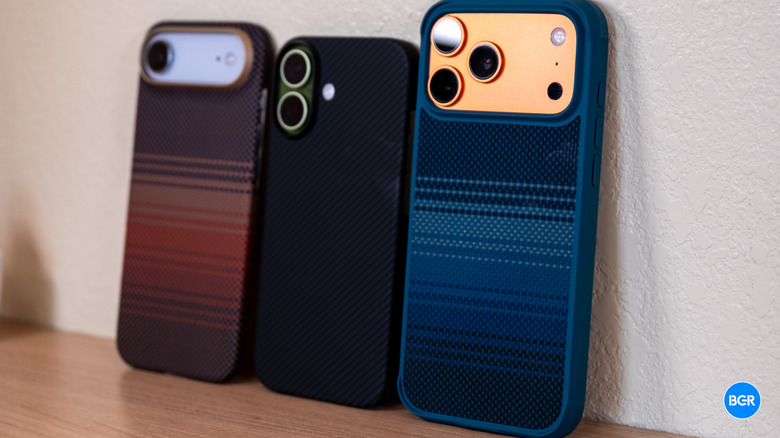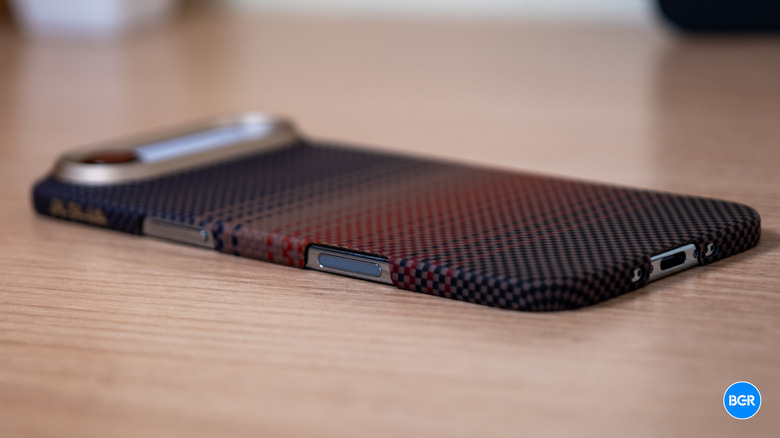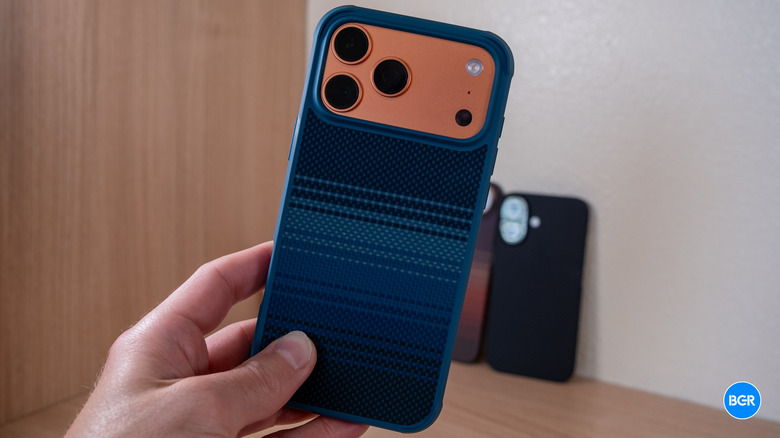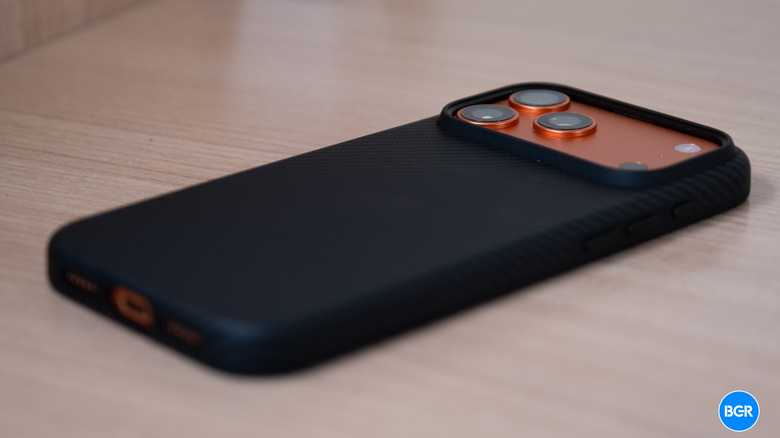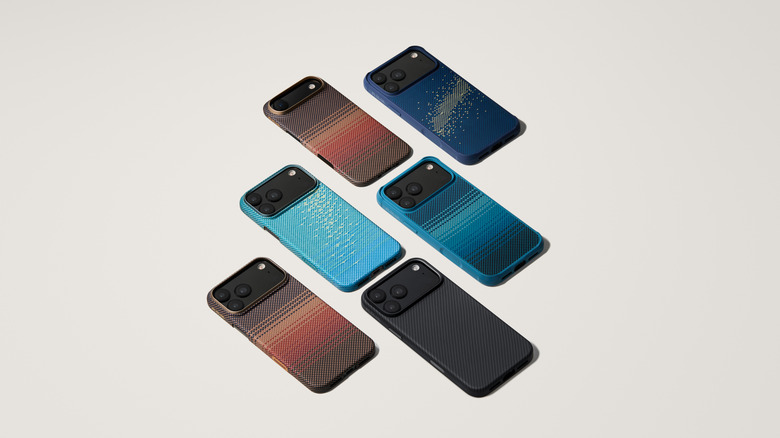Pitaka Cases Review: Keeping Your iPhone 17 Safe In Style
Pitaka has long been known for its sleek, durable cases made from aramid fiber, which is a material often used in the aerospace industry and for body armor. For 2025, the company has a range of cases for the latest iPhone models –- and I was able to test a range of them with the iPhone 17, iPhone Air, and iPhone 17 Pro Max.
Of course, there's more competition in the case space than ever. Apple's first-party cases are seemingly much better this year than last, thanks to the TechWoven fabric that debuted alongside the 2025 iPhone models. Plus, Pitaka's cases aren't necessarily cheap. With that in mind, are the Pitaka Ultra-Slim, Aramid ProGuard, and Aramid UltraGuard cases worth buying? I've been using them to find out.
Pitaka Ultra-Slim Case
The Ultra-Slim Case is the one most likely to appeal to anyone who loves the feel of a case-free iPhone but wants at least some protection. I particularly liked how it felt on the iPhone Air for that reason. Arguably, using a case on the iPhone Air defeats the purpose of the iPhone Air, as it adds some bulk to what is supposed to be a super thin and lightweight phone. Thankfully, the Ultra-Slim case preserves the slim and light feel. Sure, it adds a bit of thickness, but the phone still feels a whole lot thinner than other phones out there.
Unlike in some cases, Pitaka has opted for cutouts instead of button covers, including for the iPhone Air's Camera Control. On other 2025 iPhone models, like the Ultra-Slim case for the base iPhone 17, there's a cover for the Camera Control specifically, instead. Thankfully, I was still able to use the features of the Camera Control, including swiping between settings and making adjustments.
You may or may not like the fact that there are cutouts instead of covers, of course -– the buttons being exposed means they could get damaged in the event of a drop. Also, the edges of the case don't go much past the edge of the phone, which could leave the screen exposed -– so if you're worried about keeping the screen safe, it's worth using a screen protector.
The Aramid fiber texture feels high-quality and grippy without being coarse, and the color options look quite nice. I especially liked the Sunset option. For those who prefer something a little more subtle, there's still a black option. There's also full MagSafe support, as you'd expect at this price point. At $49.99, the Ultra-Slim Case strikes a good balance between being protective and remaining thin and light. I liked it more on the iPhone Air than on the base iPhone 17, but it looks and feels good on both. It is the same price as Apple's official iPhone Air case, but I like it more.
Pitaka Aramid ProGuard Case
The Aramid ProGuard is the bulkiest in the lineup, though to Pitaka's credit, it's not unwieldy. It's noticeably bulkier than the Ultra-Slim model but still lighter and thinner than many competing rugged cases. The corners are reinforced with Pitaka's arched cushioning system, designed to absorb shock from multiple directions. Apart from the protection, what this means for you is that the case looks and feels a little busier.
Unlike the Ultra-Slim, this one includes button covers, and they felt fine. The Camera Control cover is designed to be thin, and again, it still felt like I was able to control it easily. The textured back adds both grip and a premium look, and there are still plenty of color options. I liked the Moonrise option the best of the cases I was sent. This case comes in at $59.99, which is $10 more than the Ultra-Slim, but given the added protection, it might be worth the added cost for some. While more protective and obviously thicker, again, it didn't feel too bulky or heavy.
Pitaka Aramid UltraGuard Case
Pitaka's Aramid UltraGuard sits between the two extremes in size but is designed to offer better protection in a thinner profile than the Aramid ProGuard. Gone are the raised corners, replaced by a flatter, cleaner profile that's easier to slip into a pocket. At 2mm thick, it's still not exactly "thin," but it manages to feel sleek rather than bulky.
Pitaka uses what it calls Orca Resin in this model, which is a proprietary composite meant to boost durability without adding weight. That resin covering adds to protection, but it also means the case is more likely to pick up smudges and fingerprints -– and it does so liberally. The Camera Control button here uses a capacitive cover, which feels great to use and maintains responsiveness, even during quick camera adjustments.
Design-wise, the UltraGuard has the most balanced look of the three. It's sleek and thin enough, but still feels like it can take a hit. At $79.99, it's also the most expensive option. While that price tag might make it a little expensive for some, if you're looking for a high level of protection and still want something sleek, the price may be justified.
Conclusions
Pitaka's latest lineup makes it easy to find a case that fits your exact priorities. The Ultra-Slim is for those who want as thin of a case as possible, the ProGuard is for protection at a lower cost than Pitaka's top-end, and the UltraGuard is for those who want both high protection and a sleeker profile.
All of the cases are solid and well-built, too. Again, you'll have to decide for yourself if you like the button cutouts on the Ultra-Slim case -– there are other thin cases that have covers instead. But, either way, you're getting a relatively protective case that should save your phone in the event of most scratches and drops.
